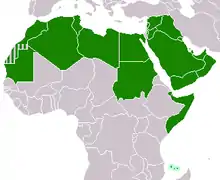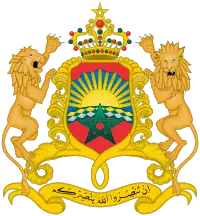Cinema of Morocco
The history of the cinema of Morocco dates back to "The Moroccan Goatherd" by Louis Lumière in 1897. During the French protectorate, films were produced and directed by French filmmakers, and in 1952, Orson Welles directed his Othello in the historic city of Essaouira. Since independence in 1956, Moroccan film directors and producers have produced a growing number of films, some of which have been met with growing international success.
| Cinema of Morocco | |
|---|---|
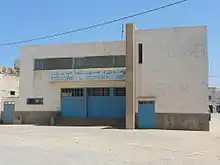 Cinema Rif Essaouira | |
| No. of screens | 68 (2011)[1] |
| • Per capita | 0.2 per 100,000 (2011)[1] |
| Main distributors | Megarama Magreb Modern Films Younes[2] |
| Produced feature films (2011)[3] | |
| Fictional | 23 |
| Animated | - |
| Documentary | 1 |
| Number of admissions (2012)[4] | |
| Total | 2,011,294 |
| • Per capita | 0.08 (2010)[5] |
| National films | 681,341 (33.8%) |
| Gross box office (2012)[4] | |
| Total | MAD 69.2 million |
| National films | MAD 19.3 million (27.8%) |
| Cinema of Morocco |
|---|
 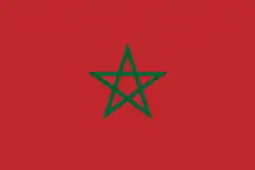 |
|
International Film Festival of Marrakech |
| Foreign movies shot in Morocco |
History
Cinema in Morocco has a long history, stretching back over a century to the filming of Le chèvrier Marocain ("The Moroccan Goatherd") by Louis Lumière in 1897. Between that time and 1944, many foreign movies were shot in the country, especially in the Ouarzazate area.
In 1944, the Moroccan Cinematographic Center (CCM), the nation's film regulatory body, was established. Studios were also opened in Rabat.
In 1952, Orson Welles' Othello won the Palme d'Or at the Cannes Film Festival under the Moroccan flag. However, the festival's musicians did not play the Moroccan national anthem, as no one in attendance, knew what it was.[6] Six years later, Mohammed Ousfour would create the first Moroccan movie, Le fils maudit ("The Damned Son").
In 1968, the first Mediterranean Film Festival of Morocco was held in Tangier. In its current editions, the event is held in Tetouan.[7] This festival was followed in 1982 with the first national festival of cinema, which was held in Rabat. In 2001, the International Film Festival of Marrakech (FIFM) started its yearly festival in Marrakech.
In his work La septième porte (The Seventh Door), the poet, novelist and filmmaker Ahmed Bouanani (1938-2011) retraces 24 years of Moroccan film history. As described by literary critic and publisher Kenza Sefrioui, who edited Bouanani's personal history of cinema in Morocco, the author "recounts scenarios, he details the atmosphere of the scenes, he attests to reception, and he presents himself as an often ironic, sometimes humorous commentator, in dialogue with his reader."[8]
Film industry in Morocco
Directors
Morocco has known a first generation of directors in the 70s-90s. They participated to the development of film industry in Morocco. Notable film makers are Hamid Bénani (Wechma, Traces, 1970), Souheil Ben Barka (Les Mille et une Mains, 1974), Moumen Smihi (El Chergui ou le Silence violent, 1975), Ahmed El Maânouni (Alyam, Alyam, 1978 ; Transes (Al Hal), 1981; Les Cœurs brûlés, 2007), Jilali Ferhati (Poupées de roseau, 1981; La Plage des enfants perdus, 1991), Mustapha Derkaoui (Les Beaux Jours de Shéhérazade, 1982) ; Farida Benlyazd (Une porte sur le ciel, 1988), Saâd Chraïbi (Chronique d'une vie normale, 1990), Mohamed Abderrahmane Tazi (Badis, 1989 ; À la recherche du mari de ma femme, 1993), Abdelkader Lagtaâ (Un amour à Casablanca, 1992 ; La Porte close, 1998), Hakim Noury (Le Marteau et l'Enclume, 1990), Hassan Benjelloun (La Fête des autres, 1990)
Since roughly the year 2000, a younger generation of Moroccan filmmakers has been taking over. Some of its prominent names are:
- Nabil Ayouch
- Narjiss Nejjar
- Faouzi Bensaïdi
- Nour-Eddine Lakhmari
- Laïla Marrakchi (her first full-length feature film, Marock, produced in 2004 was nominated at the Festival de Cannes 2005 in the category "Un certain regard").
Festivals
- International Film Festival of Marrakech
- Mediterranean Film Festival
Comedians
Living in Morocco
- Latefa Ahrrare
- Driss Aït Jimhi
- Hussein Aït Jimhi
- Sana Akroud
- Sanâa Alaoui
- Said Amel
- Amal Ayouch
- Salima Benmoumen
- Assaad Bouab
- Hassan El Fad
- Rachid El Ouali
- Zineb Ennajem
- Noureddine Ettaouil
- Kenza Fridou
- Nadia Kounda
- Hicham Bahloul
- Sadiaa Ladib
- Mohammed Marouazi
- Amine Nasseur
- Driss Roukhe
- Ahmed Saguia
- Karim Saidi
- Abderrahim Tounsi
Living abroad (mainly in France)
- Amidou
- Souad Amidou
- Rachid Badouri
- Jamel Debbouze
- Mustapha El Atrassi
- Gad Elmaleh
- Rachida Khalil
- Hicham Nazzal
- Ahmed Sagui
- Saïd Taghmaoui
- Roschdy Zem
National structure
Union and professional organizations
The Moroccan Cinematographic Centre (Centre cinématographique marocain) is a public institution under the Ministry of Culture for the promotion, distribution and projection of movies in Morocco. Most other organisations relatied to films and cinemas are grouped into business chambers or trade unions, for example the National Federation of Film Clubs or the National Chamber of Film Producers.
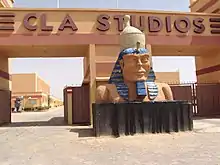
Film studios
- studios ATLAS (Ouarzazate)
- studios KAN ZAMANE
- studios CINEDINA (Soualem)
- studios ESTER ANDROMEDA
- CLA Studios (Ouarzazate)
- studios CINECITTA (Ouarzazate)
Institutes for film and audiovisual studies
- École supérieure des arts visuels de Marrakech (ESAVM)
- Institut spécialisé dans le métiers du cinéma (ISMC) Ouarzazate[9]
- Institut spécialisé du cinéma et de l'audiovisuel (ISCA) de Rabat
- Institut supérieur des métiers de l'audiovisuel et du cinéma (ISMAC)
See also
- List of Moroccan films
- List of foreign movies shot in Morocco
- Culture of Morocco
- Cinema of the world
References
- "Table 8: Cinema Infrastructure - Capacity". UNESCO Institute for Statistics. Retrieved 5 November 2013.
- "Table 6: Share of Top 3 distributors (Excel)". UNESCO Institute for Statistics. Retrieved 5 November 2013.
- "Table 1: Feature Film Production - Genre/Method of Shooting". UNESCO Institute for Statistics. Retrieved 5 November 2013.
- "Bilan cinematographique 2012" (PDF). Centre Cinématographique Marocain. Retrieved 14 November 2013.
- "Country profile: 2. Morocco" (PDF). Euromed Audiovisual. p. 114. Retrieved 14 November 2013.
- "Wellesnet: Filming Othello". www.wellesnet.com. Retrieved 19 April 2018.
- "Morocco.com | 14th Tetouan Mediterranean Film Festival". Morocco.com. Retrieved 3 February 2021.
- Lynx Qualey, Marcia (2 February 2021). "Ahmed Bouanani and Morocco's Seventh Art". ArabLit & ArabLit Quarterly. Retrieved 3 February 2021.
- "Ouarzazate". Institut Spécialisé dans les Métiers du Cinéma - OFPPT (in French). 27 March 2011. Retrieved 3 February 2021.
Further reading
- Ahmed Bouanani, La septième porte. Une histoire du cinéma au Maroc de 1907 à 1986. Kulte Editions, 2021, 336 p. (in French)
- Kevin Dwyer, "Morocco: A National Cinema with Large Ambitions" in: Josef Gugler (ed.) Film in the Middle East and North Africa: Creative Dissidence, University of Texas Press and American University in Cairo Press, 2011, ISBN 978-0-292-72327-6, ISBN 978-9-774-16424-8, pp 325-348
External links
- Moroccan Cinema Cinema portal in Morocco
- CineMa Cinema
- JAWHARA, prison girl, by Saad Chraïbi, in Babelmed.net
